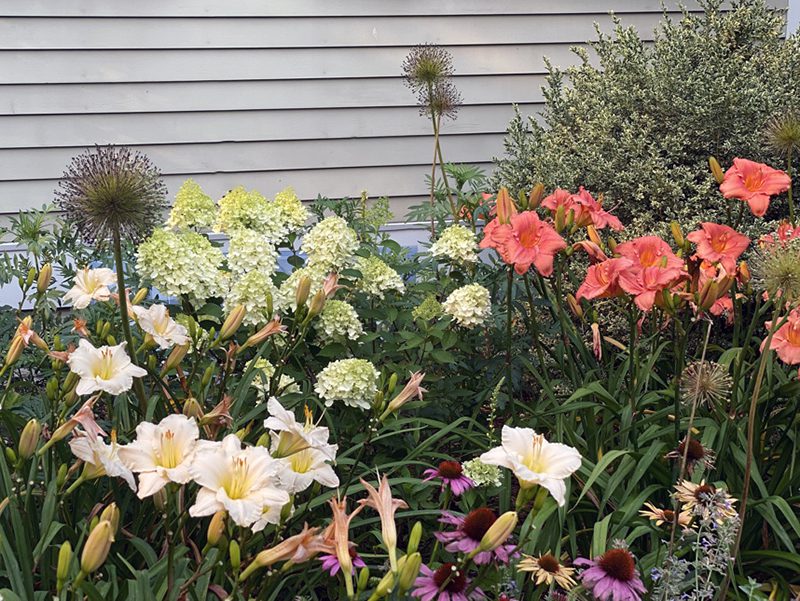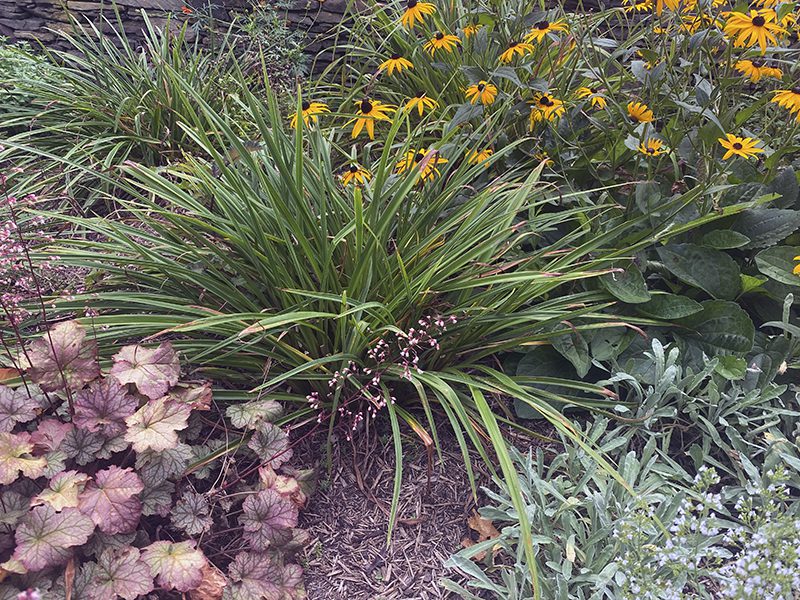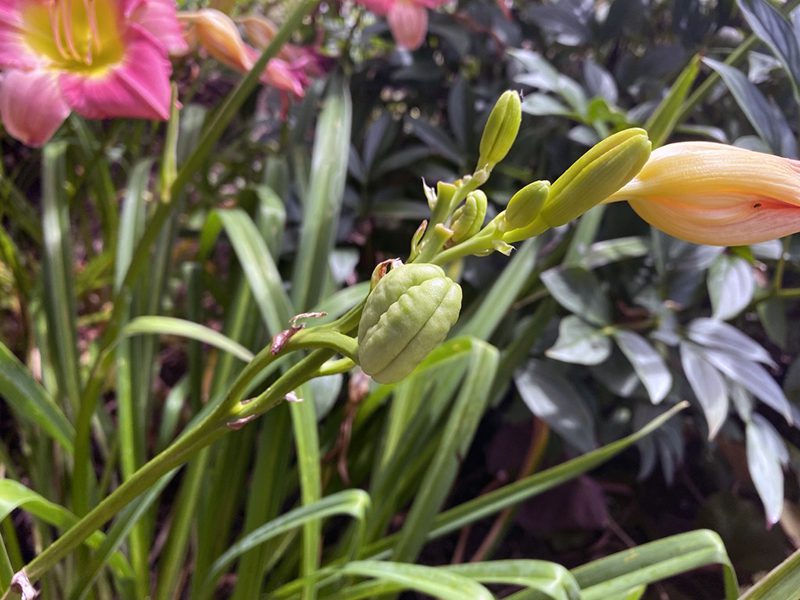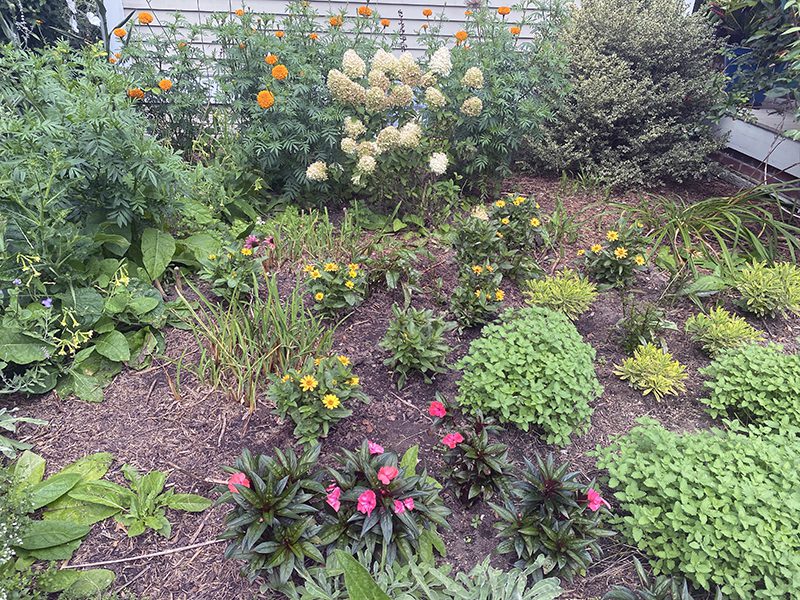Daylily Care in August
Daylily Care in August
In June and July, when the daylilies are in full bloom, they are magnificent. We love their bold colors in perennial gardens, foundation plantings and around our blue Hydrangea shrubs. But by mid-August, all but the latest flowering varieties are finished and it’s time to spend just a little bit of clean-up time.

In August, once those lovely flowers have finished, the look of a perennial garden can be greatly improved by removing the old bloom stems and any yellowed leaves. Sometimes the foliage will be green and attractive enough so that only the stems need be removed.

Many people have trouble telling if their daylily plant is finished flowering or not. Is that a bud on the stem? Maybe it’s going to flower again! Here is a photo that shows the difference between a bud and a seedpod, so you will be able to tell if you can remove the stem to clean things up without destroying a future bloom.

Some daylilies have more yellow leaves than green in August, and these are best dealt with by cutting the entire plant to the ground. Don’t worry that this might hurt the plant; daylilies will grow new leaves in a couple of weeks and those will not only look better, but they’ll be healthy enough to continue to store energy in the root systems for next year.

On Cape Cod our flower gardens can look beautiful through October, so there’s no reason not to do some mid-summer maintenance to make sure they are attractive into the fall. Empty space in a perennial garden can be filled with annuals in order to have more flower color for the next two+ months.

For those who grow the earlier flowering varieties of daylilies such as Happy Returns, Stella D’oro, and Early Bird Cardinal, another advantage of cleaning them up is the stimulation of a few more flowers in September. After removing the old stems, seedpods and yellow leaves on these plants, water them well and give them an application of a liquid fertilizer. This will stimulate the growth of more foliage and flowers.
To hear more about the late-Summer flower garden and how to make it more attractive, join C.L. Fornari’s virtual talk , Flower Garden Fixups on August 22 at 4 PM. Register up until noon on that day by clicking here.
Subscribe To Our Newsletter
Sign up for our weekly email about sales and events.
